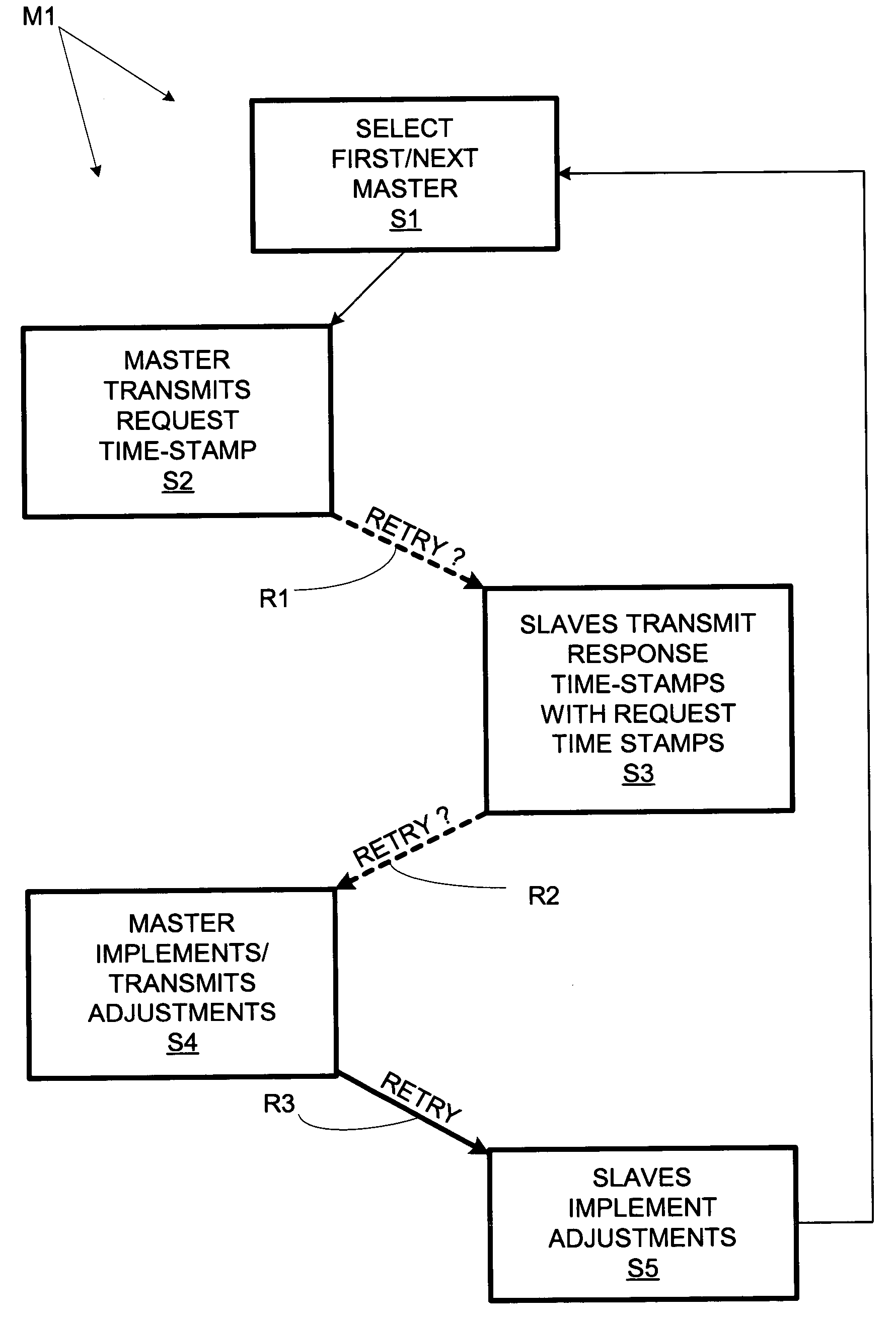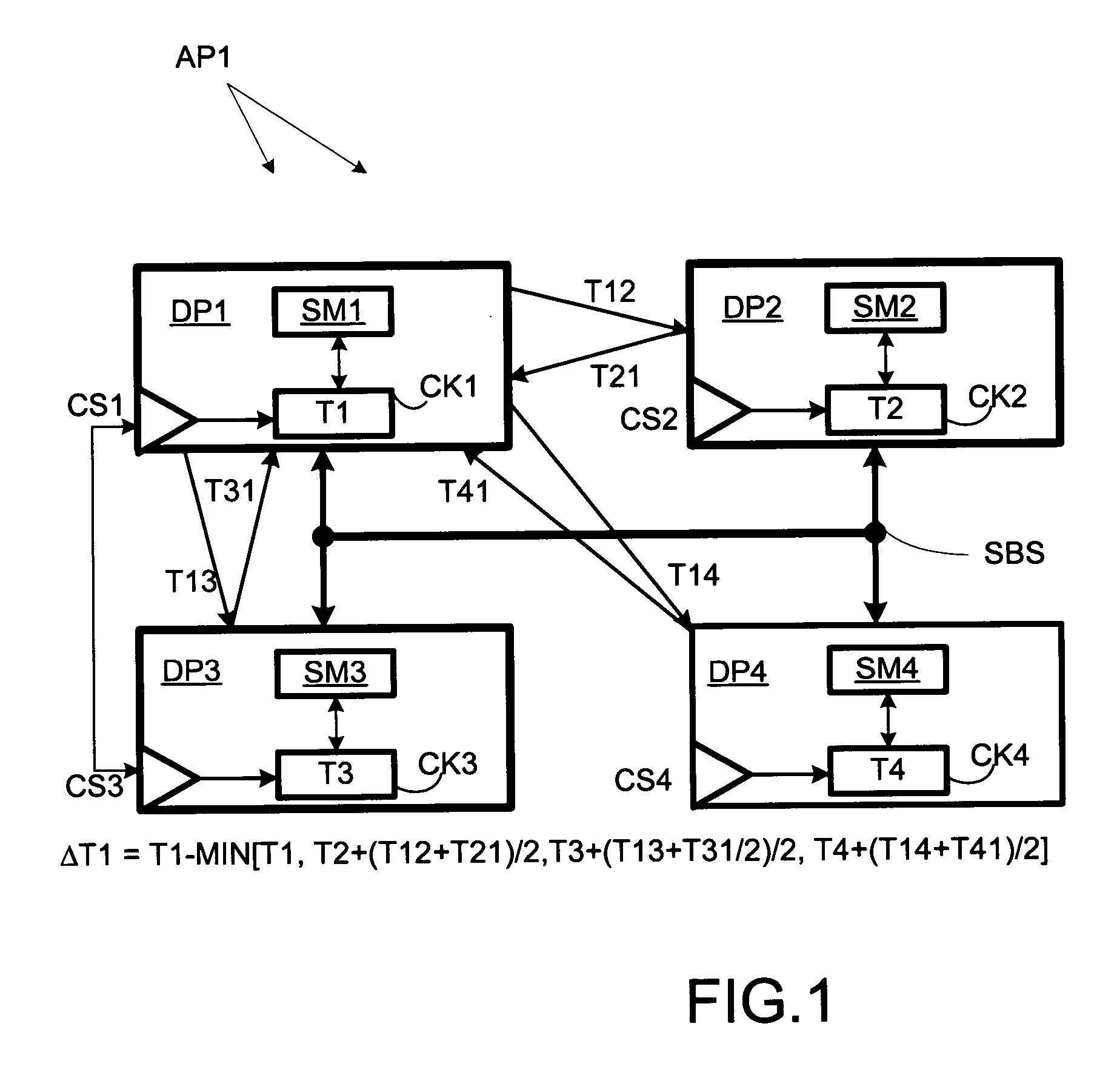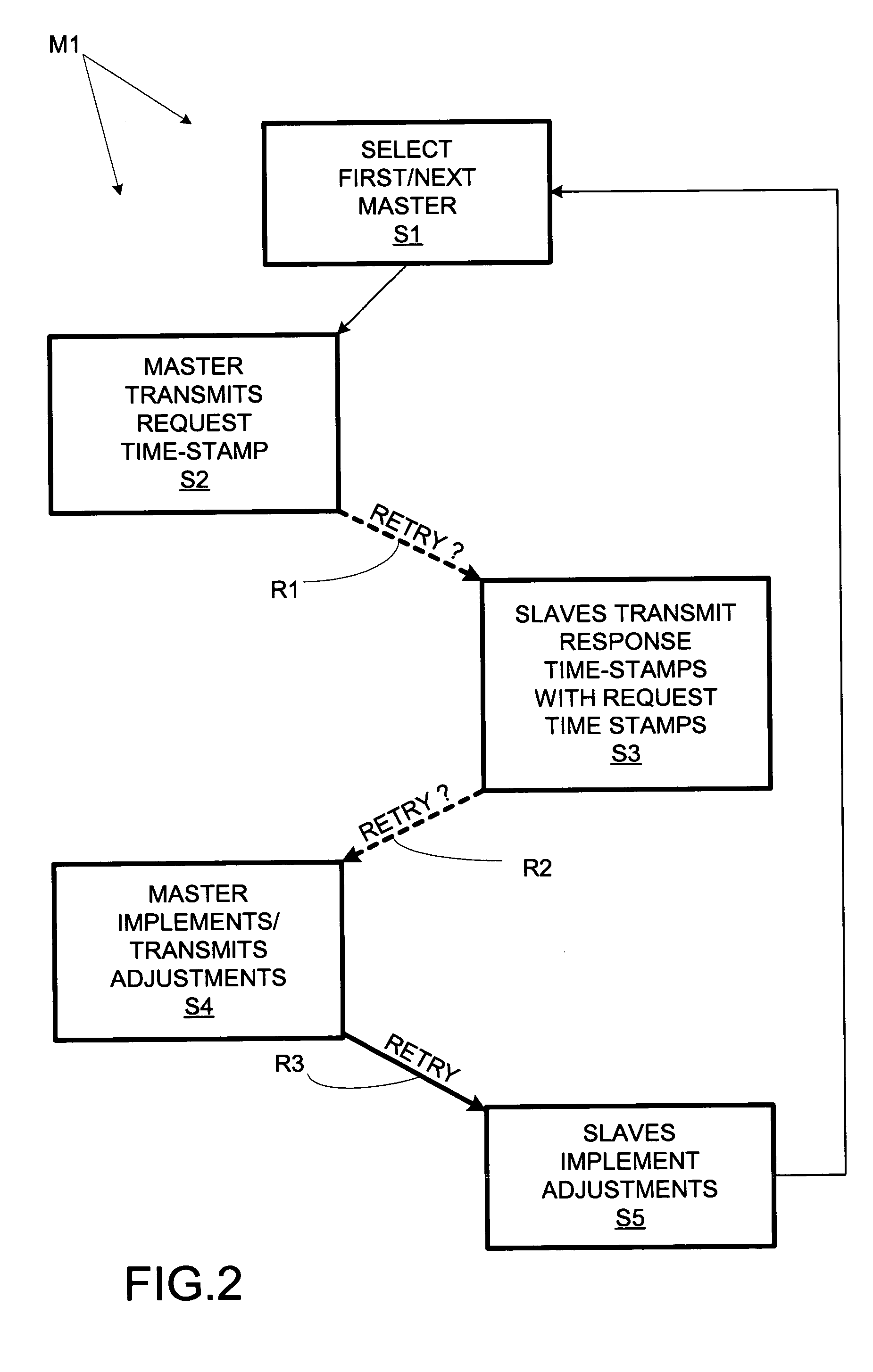Multiprocessor system with interactive synchronization of local clocks
a multi-processor system and clock technology, applied in multiplex communication, generating/distributing signals, instruments, etc., can solve the problems of imposing significant variability in latencies, imposing longer latencies, and affecting the validity of time stamps across processors, so as to achieve a small latency in obtaining
- Summary
- Abstract
- Description
- Claims
- Application Information
AI Technical Summary
Benefits of technology
Problems solved by technology
Method used
Image
Examples
Embodiment Construction
[0017] A computer system AP1 comprises multiple data processors DP1-DP4, as shown in FIG. 1. Each processor DP1-DP4 has a respective clock CK1-CK4, which is a counter driven by a respective clock signal CS1-CS4. At each instant, each clock CK1-CK4 indicates a respective time T1-T4. Clock signals CS1 and CS3 have a common source so clocks CK1 and CK3 operate synchronously, but clock signals CS2 and CS4 are generated independently (of each other and of CS1 and CS3), as so synchronization is required. Each processor DP1-DP4 has a respective synchronization manager SM1-SM4 for managing synchronization operations across processors. Processors DP1-DP4 communicate over system bus SBS.
[0018] Synchronization managers SM1-SM4 provide for implementation of a method Ml, flow-charted in FIG. 2, of the invention. At step S1, a first synchronization master is selected from processors DP1-DP4. In the illustrated embodiment, each processor is assigned a schedule for assuming master status. In this ...
PUM
 Login to View More
Login to View More Abstract
Description
Claims
Application Information
 Login to View More
Login to View More - R&D
- Intellectual Property
- Life Sciences
- Materials
- Tech Scout
- Unparalleled Data Quality
- Higher Quality Content
- 60% Fewer Hallucinations
Browse by: Latest US Patents, China's latest patents, Technical Efficacy Thesaurus, Application Domain, Technology Topic, Popular Technical Reports.
© 2025 PatSnap. All rights reserved.Legal|Privacy policy|Modern Slavery Act Transparency Statement|Sitemap|About US| Contact US: help@patsnap.com



